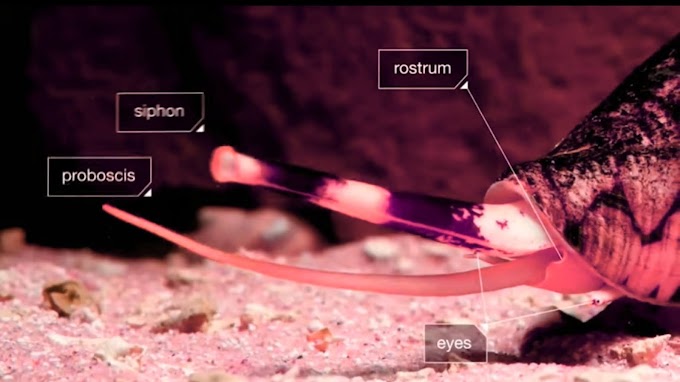 |
| A dark matter |
They dubbed these elusive sequences "DARK DNA". But the reality is this dark DNA may be more of a blind spot in our DNA sequencing technology than anything else. A closer look at the genome of the rodent found a heavily mutated section with abnormally high amounts of guanine and cytosine, two of DNAs four base molecules called G and C for short. it turns out g and c rich sequences are difficult to detect, so the researchers missed this mutated pocket of DNA raises questions about two quickly mutations occur, and what genes we may have missed when we sequenced other genomes like our own which is crazy to think that there could be more DNA in us that we realized, especially when you consider that we have only known what about 1 to 2% the stuff we have found does. These sections code proteins that have some functions. The other 98% does not make anything and so we do not know why its there. This vast amount of genetic code has also been referred to as DNAs dark matter apparently biologists love the dark matter analogy, only the kind about now is the opposite in the first example. Instead of knowing what a gene does but not finding it, We have found a lot of genes but have no idea what they do. slowly through we are chipping away at that riddle too. It is still helpful for regulating gene expression, hardware, like hemoglobin, in blood cell precursors, and ion channel in neurons. Some of these sequences are almost identical across different species like humans, mice, and chickens. Considering we have been evolving separately for up to 200 million years researchers concluded somehow to be vital to our survival. When researchers detected four of these genes in mice, they found abnormalities in mice's brains and wonder. If a mutation in these overlooked non-coding sections of DNA could be responsible for brain diseases like Alzheimer's. So there is a lot of DNA to parse through and these could be even more we just have not found because of limitations in our sequencing technologies. Our genome is still a pretty dark and mysterious place, and more research is needed. It's our own genome or our DNA that term very own genome of your DNA if that term. actually nicely illustrates how science looked at our genome has the last couple of decades has looked at scientists and genome researchers have actually focused or just a very portion of our genome right and the majority a largely right and the majority has been largely ignored with the majority I mean 95%. ignored with the majority really people didn't believe there was anything functional in that 95% that really through that all that was backed in her genome was comprised within that 5% now the second reason comprised within that 5%. Now the second reason why the part of our genome has been completely ignored is that fact that been completely ignored is the fact that we just lacked the proper technology to study it in detail and that port f our genome which I refer to here as a dark side of our genome is the part I am interested before.
I explain to you what that is true to take you back a couple of years in the time fifth or sixth grade in high school and to give a little bit of background information. So I think most of you that our body is comprised of cells we have trillions of these cells right and inside every cell, there is an exact copy of our genome, our DNA there's about two meters of DNA in every cell, so if you tie all that DNA together you would actually end up a rope that would stretch our entire solar system, So I have quite a bit of DNA ourselves and that DNA actually contains all information that is required to build a human being.
Let's say the functional elements within our DNA are things we call genes and these genes can have very different functions inside a cell and in order to explain that you can think of a cell as a complex train or subway network right they are basically two major components in such a network only one hand you have one component that is related to infrastructure think of trains tunnels and on the other hand, you have components that are related to steering and regulation think of the train driver the traffic light switch parts and what have you end the situations in a cell is actually very similar in a cell. You have genes that will contribute the infrastructure and you have genes that contribute to regulation. Now it's clear that you have defects and components that are important for regulation you get choices in the network if you tale the train sometimes like I do.
In Belgium, you probably know what I mean in a cell again a situation is very similar if you have defects and genes that are essential for regulation within that cell you can get choose and from that choose you can get diseases including for intense cancer so cancer is basically an accumulation of gene defects rich will result in a situation where cells lose their integrity start to divide. An uncontrollable manner and ultimately from a tumour now without any doubt studying the effects in these genes has really helped us in understanding how cancer arises how they evolve and how we can treat cancer patients, so understanding these genes defects is crucial now the thing is that our researchers have actually for decades focused on genes that comprised in that 5% of our genome right for the reasons & 95% per cent has been completely untouched and again the reason is that people untouched and again the reasons are that people didnt belive there was anything functional that there that we could easily learn anything from that part and together with that the fact that we lack the proper technology to do so and the proper technology to do so and i think as in many scientistific disciplines lepa forward in knowledge is often proceed by a leap forwards in knowledge is often preceded by aleap forward in technology and at field of genome research this technological revolution that occured lets say more or less adecades ago is atechnology that we call today or that we we know today as next generation sequencing us to study our dark side of our genome with unprecedented detail so the machines . Much genome information that we can really study every aspect of our genome today and applying these technologies the result has been quite staggering what we actually found and other researchers together with us is that our dark side of our genome actually contains tens of thousands of novel genes right so genes that did have not been studied in the context of human development of the context of disease and what is interesting is that the genes that we find in the dark side of our genome are genes that are mainly involved.
At last, the most mysterious thing in biology is dark DNA.DNA sequencing is a process when helps the scientist to find the sequence of nucleic acid. DNA sequencing helps the scientist to know more about humans and DNA, with the help of this technology we understood the genome of the animals with the help of this technology we found why giraffes neck is so long and with the help of this technology if found how do we evolve. The complete set of DNA is called the genome. there are many questions which have no answer, even scientists don't know . one of them is dark DNA. To know more about it watch till the end. In the course of research on animals, scientists found that some genes are missing which should be present there without these genes animals cannot survive. Scientists named these missing genes as dark DNA. Scientists come to know about it when scientists carrying on DNA sequencing of rats. The scientist also did genome sequencing of a bird with rat, in that scientist found there is no part of DNA id present which produce leptin and in rat, there is no part which can produce insulin, insulin is a chemical which prevents type2 debates in animals but that animal that part of DNA was missing which produces insulin now the question arises. How these animals are alive they should die, from that fact scientists out the name as dark DNA. Which was there but we could not find it. Scientists believe that reason why they could not find it tell now is the technology of DNA sequencing is not totally correct we have to do more work on this technology.
To know about truth v/s conspiracy Illuminati.
To know about new species discovery blind ant.
To know about universe mystery bigbang.
Follow the above links.










0 Comments